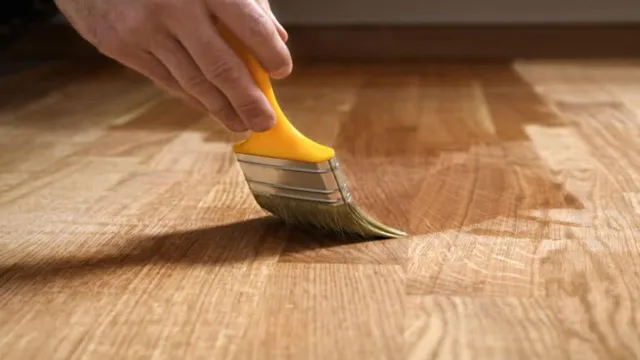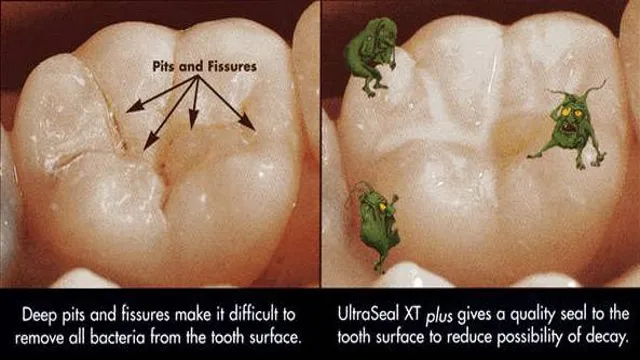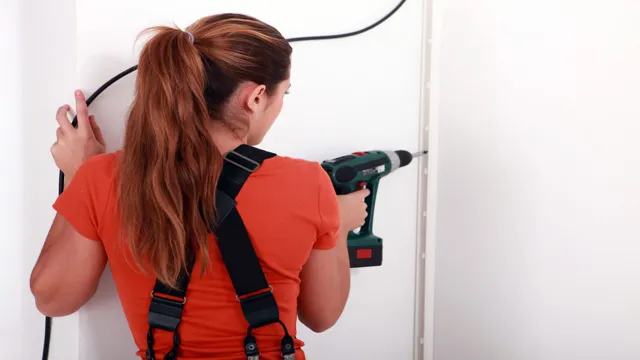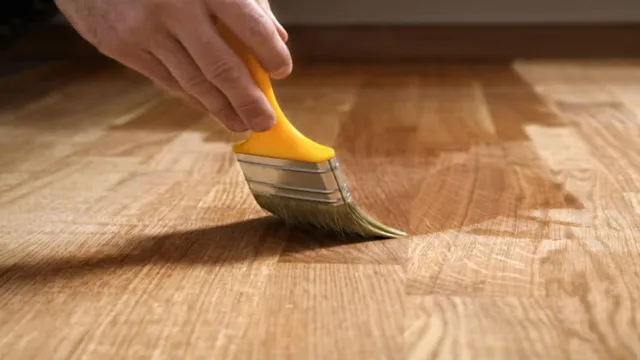How to Put Magnets in Wood: A Step-by-Step Guide for DIY Enthusiasts
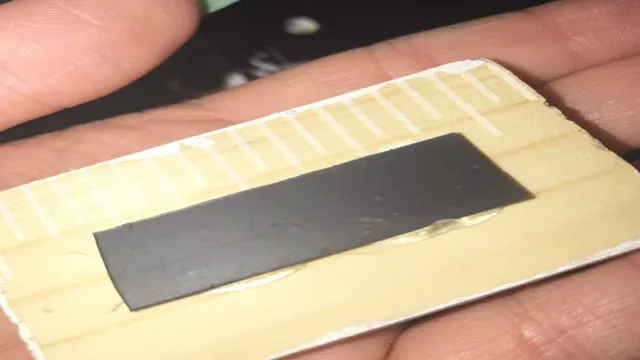
Have you ever wanted to add magnets to your woodworking projects, but didn’t know where to start? Adding magnets to wood can be a fantastic way to incorporate functionality and creativity into your projects. However, many people are unsure of the necessary steps and tools required to do so. Fortunately, adding magnets to wood is a relatively simple process that can be done with just a few basic tools.
Whether you’re looking to create a magnetic knife holder or a unique storage solution, adding magnets to your woodworking projects can have many benefits. In this blog post, we’ll explore the step-by-step process of adding magnets to wood, including the tools and materials required. We’ll also discuss some common mistakes to avoid and offer some tips and tricks to help make the process as smooth as possible.
So, whether you’re a seasoned woodworker or just starting out, read on to learn how to add magnets to your next woodworking project. Get ready to take your creativity to the next level and make your woodworking projects more functional than ever before!
Gathering Materials
If you’re looking to add a magnetic element to your woodworking project, then you’ll need to gather the right materials. Firstly, you’ll need the magnets themselves. These can be purchased at most hardware stores, and come in a variety of shapes and sizes.
It’s important to choose a magnet that’s strong enough to hold whatever you’re attaching it to, but not so strong that it’s difficult to remove. Next, you’ll need to drill the holes in your wooden surface where the magnets will be inserted. A drill bit that’s the same size as the magnet’s diameter is ideal for this.
Finally, you’ll need to glue the magnets into place. Epoxy glue is a good option, as it’s strong and durable, and won’t expand or contract with changes in temperature. When applying the glue, be sure to use a small amount to avoid any mess or overflow.
With these materials on hand, adding magnets to your woodworking is a simple and rewarding process.
Wood
When it comes to woodworking projects, obtaining the right materials is an essential first step. While there are many options, wood remains a popular and versatile choice for furniture, flooring, and decorative items. Some people choose to purchase pre-cut wood from a hardware store, while others prefer to gather their own materials from fallen trees or lumber mills.
Whether harvesting wood directly from nature or buying it from a store, it is important to select the right type for your project. Different types of wood have unique characteristics, like color, density, and texture, which can affect the final product’s appearance and durability. By researching the types of wood available and selecting the best match for your project, you can ensure a successful and beautiful outcome.
So go out there and find the perfect wood for your next project!
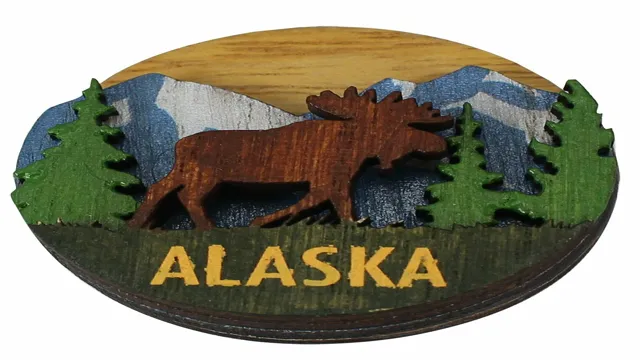
Magnets
Gathering Materials for Magnets If you’re interested in making your own magnets, you’ll need to gather a few essential materials. The key ingredient in any magnet is ferromagnetic material, which is a type of material that can be magnetized. Some commonly used ferromagnetic materials include iron, nickel, cobalt, and certain alloys.
Another important component is a magnetizing force, which can come from a variety of sources such as an electric current, another magnet, or even the Earth’s magnetic field. To actually shape the magnet, you’ll need to use tools such as a lathe or saw, depending on the size and shape of the magnet you want to create. Additionally, other materials such as adhesives or coatings may be necessary depending on the final use of the magnet.
By gathering these materials and following some basic techniques, you can create your own magnets with ease.
Drill
To get started with drilling, you’ll need to gather several essential materials. First and foremost, you’ll need a drill machine suitable for the project you’re undertaking. Pay attention to the type of drill bits you’ll need for the job – there are different bits used for drilling through wood, metal, and concrete.
It’s also crucial to wear the appropriate personal protective equipment (PPE): safety glasses, dust masks, and work gloves. Other materials you may need include screws, nails, and anchors depending on the project. Remember to have a measuring tape and pencil handy – precise measurements are key to a successful drilling project.
With the right materials, you’re well on your way to a successful DIY project that you can be proud of!
Glue
When it comes to gathering materials for a project that requires glue, there are a few key things to consider. First and foremost, you’ll want to make sure you have the right type of glue for your specific project. There are many different types of glue available, each with its own unique properties and recommended uses.
Some common types of glue include white glue, super glue, epoxy, and hot glue. Do some research to determine which type of glue will work best for your particular project. Once you have your glue, you’ll need to gather any additional materials that will be necessary for application.
This might include things like brushes, applicators, or even protective gear, depending on the type of glue you’re using. Make sure you have everything you need before you start your project, so you don’t have to stop partway through to go find missing items. Finally, it’s a good idea to do a test run before you begin the actual project.
This will give you a chance to practice working with the glue and to ensure that you have all the necessary tools and materials. Taking the time to gather materials and do a test run can help ensure that your project turns out exactly as you envision it. So, take care in gathering the materials and make sure you have everything you need to get the job done right.
Preparing the Wood
If you’re a woodworking enthusiast, you might be interested in learning how to put magnets in wood. First, you’ll want to select the type of wood you’ll be using. I recommend using a hardwood like oak, maple, or cherry for a strong hold.
Once you have your wood selected, measure the area where you want to place the magnet. Next, drill a shallow hole in the wood where you want the magnet to sit. Be careful not to drill too deep or you’ll risk drilling all the way through.
Once the hole is drilled, remove any sawdust or debris with a compressed air can or a small brush. The surface should be clean and flat for the magnet to securely attach. Now, you’re ready to place the magnet into the hole.
Make sure it sits flush with the surface of the wood. Adhere the magnet into the hole with a strong adhesive like wood glue or epoxy. Allow ample drying time before using your new magnetic wood piece.
Congratulations, you’ve learned how to put magnets in wood!
Choosing a Drill Bit
When it comes to drilling into wood, selecting the right drill bit is essential for achieving a clean and precise hole. The choice of bit is determined by the type of wood and the size of the hole required. For softwoods such as pine or cedar, a high-speed steel twist bit is sufficient, whereas hardwoods like maple and oak may require a carbide-tipped bit for best results.
Before drilling, it is crucial to prepare the wood by marking the spot where the hole will be placed and clamping it down to a stable surface to prevent any movement. Additionally, it is recommended to drill a pilot hole first to prevent the wood from splitting when the larger bit is used. By taking these precautions and selecting the appropriate drill bit, woodworkers can achieve clean, accurate holes without the risk of damage or mistakes.
Marking the Drill Locations
When prepping the wood for your drilling project, it’s important to take the appropriate steps to avoid any mistakes or wastage. Start by making sure your wood is properly sanded and smooth to ensure accuracy in your measurements and markings. The smooth surface will also prevent any mishaps while drilling, such as the wood splitting or cracking.
Next, use a pencil to mark where you plan to drill. It’s essential to take your time with this step, as accuracy is key. Measure and mark each drill spot with precision, ensuring that they are all level and equidistant from each other.
This will save you time and prevent any unsightly mistakes. Remember, taking a little extra time at the beginning of the project can save you a lot of time and frustration in the long run.
Drilling Holes
Drilling holes in wood is the best way to insert magnets into the material. To start, measure and mark the spot where you want to place the magnet. Next, select a drill bit that is slightly smaller than the diameter of your magnet and attach it to your power drill.
Position the drill bit at the center of your marked spot and apply steady pressure while drilling into the wood. Repeat this process until you reach the desired depth. Once complete, gently tap the magnet into the hole with a hammer until it is flush with the surface of the wood.
This method ensures that your magnets remain securely in place and can be used for a variety of DIY projects, such as hanging photos or organizing tools. Remember to always wear appropriate safety gear, such as goggles, when drilling into wood. With a few simple steps, you can easily incorporate magnets into your woodworking projects and reap their many benefits.
Inserting Magnets
If you’re wondering how to put magnets in wood, there are a few different methods you can use depending on your project and the strength of magnet you need. One option is to drill a shallow hole into the wood where you want the magnet to be placed, and then use a small amount of super glue to secure the magnet in place. Another method is to use a magnet-embedding kit, which includes a specialized drill bit and adhesive for strongly securing the magnet in the wood.
Either way, it’s important to make sure the magnet is aligned properly and flush with the surface of the wood to ensure it works effectively. With these simple steps, you’ll be able to add magnets to your woodworking creations in no time!
Adding Glue to the Holes
When it comes to crafting a DIY project, adding glue to the holes is typically the final step before the finishing touches. However, when it comes to inserting magnets, the process varies a bit. First, make sure the glue has fully dried in the holes.
Then, grab a small amount of clear-drying epoxy and use a toothpick or small brush to coat the inside of the hole. This will ensure that the magnet is securely held in place without any excess glue oozing out. Once the epoxy is applied, carefully insert the magnet into the hole and let it dry completely.
This will create a strong bond between the magnet and the project, making it functional and durable. Remember to use strong magnets to ensure the best hold. Overall, adding magnets to your DIY project can add a fun and practical element, and with these simple steps, you can do it with ease.
Placing Magnets in Holes
Inserting magnets into holes can be tricky, but also incredibly helpful in certain situations. When done correctly, it can create a strong and secure bond between two objects. To start, you will need to choose the right type of magnet for your project.
Make sure that it is the correct size and strength to fit comfortably into the hole. Once you have your magnet, you can begin the insertion process. One method is to use a small tool, such as a dental pick or screwdriver, to place the magnet into the hole.
You can also use a magnetic tool to guide the magnet into position. Be sure to insert the magnet carefully and gently so that it doesn’t get stuck or damaged. With a little patience and practice, inserting magnets into holes can become a simple and effective technique for your DIY projects.
Testing the Magnet Strength
If you’re wondering how to put magnets in wood, one important aspect to consider is the strength of the magnet. Testing the magnet strength ensures that it is powerful enough to securely hold objects in place. First, you’ll need to gather the necessary materials, including a piece of wood, magnets, and metal objects to test the magnet’s pull force.
Place the magnets in the desired location on the wood and then try attaching the metal objects to the magnet. If the objects easily slide or fall off, the magnets may not be strong enough. However, if the objects are held firmly in place, you can be confident that the magnet placement is successful.
Keep in mind that the thickness and type of wood used can also impact the strength of the magnet, so it’s important to test different variations until you find the perfect fit. With these tips, you can easily put magnets in wood and ensure their effectiveness!
Finishing Touches
Are you looking for an easy way to add magnets to your wooden project? The first step is to choose a suitable magnet, such as a rare-earth magnet that has a strong pull force. Once you have the magnets, you will need to drill a hole in the wood where you want the magnet to be placed. Then, apply a small amount of wood glue to the hole and insert the magnet, making sure it is flush with the wood’s surface.
After the glue dries, you can sand and finish the wood to match the surrounding area. With these simple steps, you can easily add magnets to your woodworking projects, whether you are creating a cabinet closure or a magnetic knife strip.
Conclusion
In conclusion, putting magnets in wood is easy and fun! Just follow these simple steps: first, choose the right type and size of magnet for your project; second, drill a hole slightly larger than the magnet; third, glue or insert the magnet into the hole using a firm pressure. With some creativity and a little magnetism, you can turn any wooden object into a magnetic masterpiece! It’s a surefire way to attract attention and keep things organized. So go ahead and give it a try – you’ll find that the magnetic force is truly irresistible!”
FAQs
What type of magnets are best for putting into wood?
Neodymium magnets are the best type of magnets to use when putting them in wood. They are strong and durable, and can easily be hidden within the wood.
Can any type of wood be used to hold magnets?
Yes, any type of wood can be used as long as it is thick enough to hold the magnets securely.
How can I install magnets into wood without damaging the wood?
To install magnets into wood without damaging it, you should use a drill bit that is slightly larger than the magnet. You can then gently tap the magnet into the hole with a hammer.
What can I use magnets in wood for?
Magnets in wood can be used for many things such as holding doors closed, creating hidden compartments, or hanging things such as pictures or keys.
How deep should the hole be when installing magnets in wood?
The hole should be deep enough to hold the magnet securely, but not too deep that it goes through the back of the wood.
How many magnets should I use for a project?
The number of magnets required will depend on the size of the project and the weight it needs to hold. It is recommended to use two or more magnets for best results.
Can I paint over magnets in wood?
Yes, you can paint over magnets in wood. However, you should first make sure that the paint is completely dry before testing the magnet’s strength to ensure it is still securely held in place.

